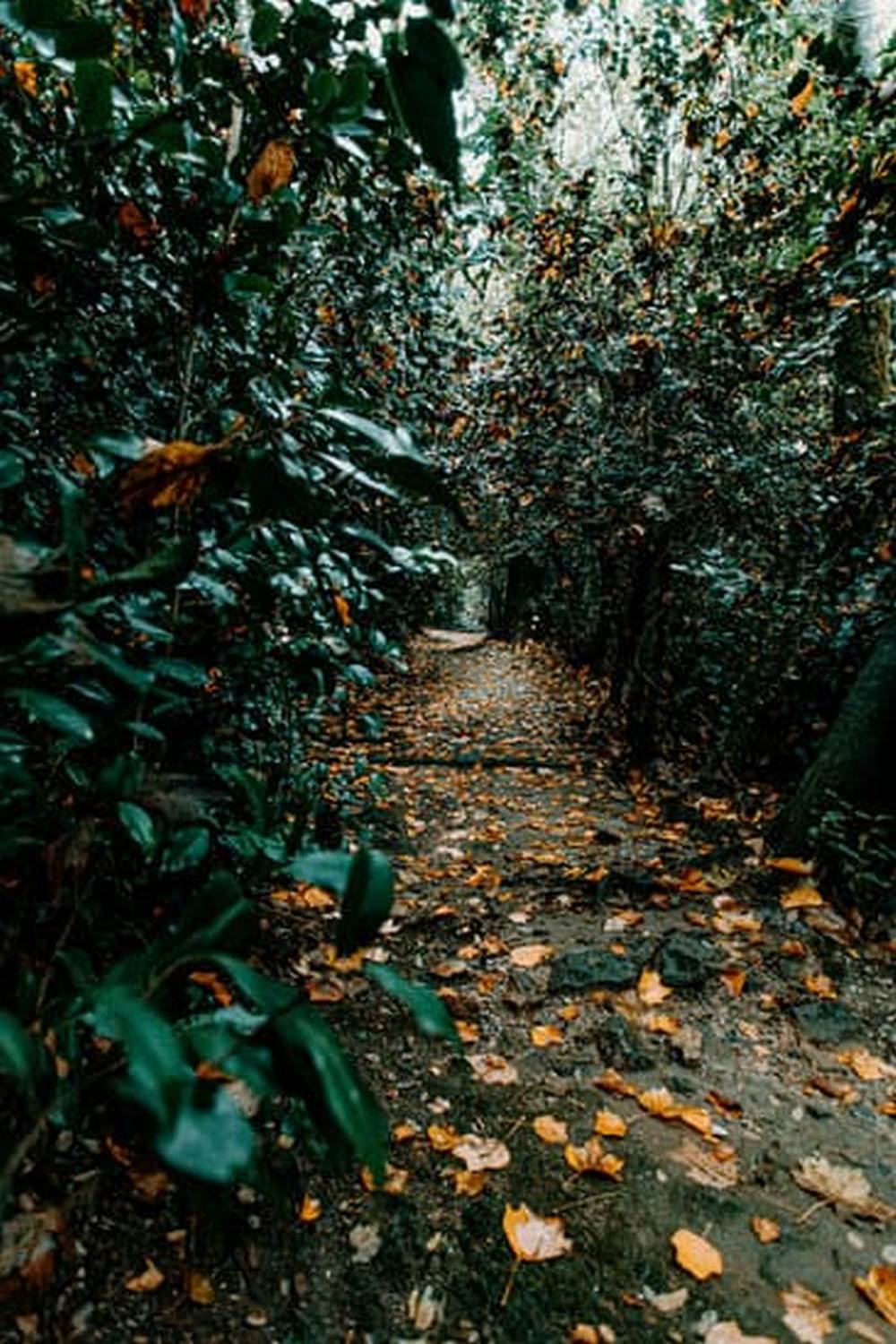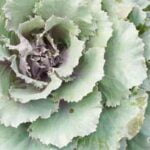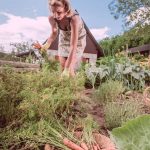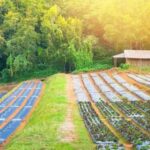Good pollinator plants to add to vegetable gardens are essential for a successful and thriving garden. In this article, we will explore the vital role of pollinator plants in vegetable gardens and how they can significantly improve yields.
We will also provide valuable tips on choosing the right pollinator plants, easy-to-grow options, planting and caring techniques, attracting native pollinators, common mistakes to avoid, and creating a pollinator-friendly garden design. Whether you’re a seasoned gardener or just starting out, understanding the importance of pollinator plants is key to enhancing biodiversity and ensuring a bountiful harvest.
Pollinator plants play a crucial role in vegetable gardens by attracting beneficial insects such as bees, butterflies, and other pollinators that help with the fertilization of crops. This process leads to increased fruit set and higher yields for various vegetables. By incorporating the right pollinator plants into your garden, you can create a thriving ecosystem that supports not only your vegetable crops but also local wildlife.
Choosing the right pollinator plants for your vegetable garden involves considering factors such as blooming periods, plant size, and compatibility with your existing garden layout. With our expert advice on selecting the most suitable options, you can ensure that your garden provides an attractive habitat for valuable pollinators while enhancing the health and productivity of your vegetable crops. Stay tuned as we delve deeper into these topics in the following sections.
Benefits of Pollinator Plants
Pollinator plants play a crucial role in the success of vegetable gardens by helping to improve yields. The presence of these plants helps facilitate the process of pollination, which is essential for the production of fruits and vegetables. Without proper pollination, many plants would not be able to produce the fruits that humans rely on for food.
Increased Fruit Production
When pollinator plants are added to vegetable gardens, they attract bees, butterflies, and other beneficial insects that aid in the pollination process. This increased pollination leads to more fruits and vegetables being produced by the garden, ultimately resulting in higher yields for the gardener.
Improved Quality of Fruits and Vegetables
Not only do pollinator plants help increase the quantity of produce in a vegetable garden, but they also contribute to improved quality. Properly pollinated plants are more likely to develop uniformly shaped and sized fruits, as well as have better flavor and texture. This is because thorough pollination ensures that all parts of a plant receive adequate nutrients, resulting in overall healthier produce.
Enhanced Biodiversity
In addition to directly benefitting vegetable garden yields, the presence of pollinator plants contributes to enhancing biodiversity within the garden ecosystem. This diversity can provide natural pest control and create a more balanced and sustainable environment for plant growth. By incorporating good pollinator plants into a vegetable garden, you can effectively support local wildlife and promote ecological balance within your gardening space.
Choosing the Right Pollinator Plants
When choosing the right pollinator plants to add to your vegetable garden, there are several factors to consider. One important factor is the blooming season of the plants. It is essential to select a variety of plants that bloom at different times throughout the growing season to provide a continuous food source for pollinators. This ensures that there are always pollinator-attracting flowers available, even as the seasons change.
Another factor to consider is the type of pollinators you want to attract. Different pollinators are attracted to different types of flowers, so it’s important to choose a variety of plants that cater to bees, butterflies, hummingbirds, and other beneficial insects. Researching which specific plant species are attractive to each type of pollinator can help you make informed decisions when selecting plants for your garden.
Additionally, considering the size and layout of your garden is crucial when choosing pollinator plants. Some plants may require more space or specific growing conditions than others, so it’s important to take into account your garden’s location and available space before adding new plants.
Supporting biodiversity by planting a diverse selection of pollinator-friendly flowers can lead to healthier vegetable crops and a more balanced ecosystem in your garden.
| Factors | Considerations |
|---|---|
| Blooming Season | Select plants that bloom at different times for continuous food source. |
| Type of Pollinators | Consider attracting bees, butterflies, hummingbirds, and beneficial insects. |
| Garden Size and Layout | Choose plants that fit the available space and growing conditions. |
Top 5 Easy-to-Grow Pollinator Plants for Vegetable Gardens
When it comes to choosing the right pollinator plants to add to your vegetable garden, there are a few key factors to consider. Not all flowers are equally attractive to pollinators, so it’s important to select plants that will effectively attract and support these essential garden visitors. Here are five easy-to-grow pollinator plants that are perfect for vegetable gardens:
Lavender
Lavender is not only a beautiful addition to any garden, but it is also a favorite among bees and butterflies. Its fragrant purple flowers are rich in nectar, making them an excellent food source for pollinators. Planting lavender near your vegetable garden can help attract these beneficial insects while adding a pop of color and a delightful aroma to your outdoor space.
Sunflowers
Sunflowers are not only eye-catching and cheerful, but they also provide abundant pollen and nectar for bees and other pollinators. These easy-to-grow flowers come in a variety of sizes and colors, making them a versatile choice for any garden. Planting sunflowers around the perimeter of your vegetable garden can help draw in pollinators while creating a stunning visual display.
Borage
Borage is known for its brilliant blue flowers and cucumber-like flavor, making it a popular choice among both gardeners and pollinators. Bees are particularly drawn to borage due to its high nectar content, making it an excellent plant to include in your vegetable garden. Its edible leaves also make it a practical and attractive addition to any culinary garden.
Bee Balm
As the name suggests, bee balm is highly attractive to bees and other pollinators due to its abundant nectar production. This native North American plant blooms in vibrant shades of pink, red, or purple, adding color and beauty to any garden space while supporting local pollinator populations.
Cosmos
Cosmos are not only easy to grow but also produce an abundance of nectar-rich flowers that appeal to butterflies, bees, and other important pollinators. These daisy-like blooms come in various shades including white, pink, and magenta, bringing visual interest as well as vital sustenance for beneficial insects.
By incorporating these top 5 easy-to-grow pollinator plants into your vegetable garden design, you can create a welcoming environment for essential pollinators while enhancing the beauty of your outdoor space.
Tips on Planting and Caring for Pollinator Plants in Vegetable Gardens
When it comes to planting and caring for pollinator plants in vegetable gardens, there are a few key factors to keep in mind. First and foremost, it’s important to select the right location for your pollinator plants. Choose a spot that receives plenty of sunlight and has well-drained soil. This will provide the ideal growing conditions for these beneficial plants.
Once you’ve chosen the perfect location, it’s time to consider which pollinator plants to add to your vegetable garden. Look for plants that are known to attract bees, butterflies, and other beneficial insects. Some good pollinator plants to consider adding to your garden include lavender, coneflowers, bee balm, sunflowers, and dill. These plants not only attract pollinators, but they also add beauty and diversity to your garden.
When planting pollinator plants in your vegetable garden, be sure to give them plenty of space to grow. Proper spacing will allow for optimal air circulation and prevent overcrowding as the plants mature. Additionally, regular watering and mulching will help keep the soil moist and prevent weeds from competing with your pollinator plants for nutrients.
By following these tips on planting and caring for pollinator plants in your vegetable garden, you’ll create a welcoming environment for bees, butterflies, and other important pollinators. Not only will this enhance biodiversity in your garden, but it will also lead to a more successful harvest of fruits and vegetables.
Attracting Native Pollinators to Your Garden
When it comes to attracting native pollinators to your garden, there are a few key factors to keep in mind. Native pollinators play a crucial role in the pollination of vegetable plants, leading to better yields and healthier crops. Here are some important tips for attracting these essential garden helpers.
First, consider planting a variety of native flowering plants that provide nectar and pollen for native pollinators. Some good options to consider include:
- Wild bergamot
- Purple coneflower
- Black-eyed Susan
- Lavender
Next, it’s important to provide nesting sites for native bees and other beneficial insects. This can be done by incorporating features such as:
- Undisturbed areas of your garden for ground-nesting bees
- Bee houses or structures specifically designed for solitary bee species
- Nesting materials such as hollow sticks or reeds for cavity-nesting bees
Lastly, avoid using pesticides and herbicides in your garden, as these chemicals can harm native pollinators. Instead, opt for organic methods of pest control and weed management to create a safe and welcoming environment for these important insects.
By taking these steps to attract native pollinators to your garden, you can enhance biodiversity and promote a healthy ecosystem while also improving the overall success of your vegetable garden.
Common Mistakes to Avoid When Adding Pollinator Plants to Vegetable Gardens
When adding pollinator plants to your vegetable garden, it is important to be aware of some common mistakes to avoid in order to ensure the success of your garden. Here are some things to keep in mind as you incorporate pollinator plants into your vegetable garden:
1. Planting Invasive Species: One common mistake that gardeners make when adding pollinator plants to their vegetable gardens is inadvertently planting invasive species. These species can spread aggressively and outcompete native plants, disrupting the ecosystem and harming local wildlife. It’s crucial to research and choose non-invasive pollinator plants that are beneficial to both the garden and the environment.
2. Using Pesticides: Another mistake to avoid is using pesticides that can harm the very pollinators you are trying to attract. Many pesticides are harmful not only to pests but also to beneficial insects like bees, butterflies, and other pollinators. Instead, consider using natural pest control methods or opt for organic alternatives that are less harmful to these important creatures.
Creating a Pollinator-Friendly Garden
When planning a vegetable garden, it is important to consider not only the types of vegetables you want to grow, but also the plants that will support pollinators. By incorporating good pollinator plants into your garden design, you can create an environment that encourages natural pollination, resulting in healthier and more abundant crops. Here are some design and layout ideas to help you create a pollinator-friendly garden:
One important aspect of creating a pollinator-friendly garden is to provide a variety of flowering plants that bloom at different times throughout the growing season. This ensures that there are always nectar and pollen sources available for pollinators, attracting them to your garden year-round. Some good pollinator plants to add to vegetable gardens include lavender, bee balm, coneflowers, sunflowers, and cosmos.
Incorporating native plants into your garden can also be beneficial for attracting local pollinators. Native plants have evolved alongside native pollinators and often provide the best sources of nectar and pollen for these insects. Research the native plant species in your area and consider adding them to your garden to attract a diverse range of pollinators.
To maximize the effectiveness of your pollinator-friendly garden, consider clustering together groups of the same plant species rather than scattering individual plants throughout the garden. This makes it easier for pollinators to locate and feed on these plants, increasing the chances of successful pollination for your vegetable crops.
| Plants | Description |
|---|---|
| Lavender | Aromatic flowers that attract bees and butterflies. |
| Bee balm | Showy flowers that attract hummingbirds and bees. |
| Coneflowers | Daisy-like blooms that attract butterflies and bees. |
| Sunflowers | Large blooms that attract bees and other beneficial insects. |
| Cosmos |
Conclusion
In conclusion, it is clear that adding pollinator plants to vegetable gardens can greatly enhance biodiversity and contribute to a successful harvest. As discussed throughout this article, pollinator plants play a crucial role in improving vegetable garden yields by attracting beneficial insects such as bees, butterflies, and other native pollinators.
By understanding the importance of these plants and choosing the right ones for your garden, you can create a thriving environment that supports both the health of your vegetables and the local ecosystem.
When it comes to selecting good pollinator plants to add to vegetable gardens, it is important to consider factors such as climate suitability, bloom time, and space availability. The top 5 easy-to-grow pollinator plants listed in this article offer excellent options for those looking to attract beneficial insects while requiring minimal maintenance.
By incorporating these plants into your garden and following the provided tips for planting and care, you can create an inviting environment for pollinators that will undoubtedly benefit your vegetable crops.
In addition to providing practical advice on choosing and caring for pollinator plants, this article has also highlighted the importance of attracting native pollinators and creating a garden design that promotes effective pollination. By avoiding common mistakes and implementing strategies to attract a variety of beneficial insects, you can maximize the success of your vegetable garden while contributing positively to local biodiversity.
Overall, taking steps to incorporate good pollinator plants into your vegetable garden will not only enhance the health of your crops but will also contribute to a more sustainable and vibrant ecosystem.

If you’re looking to get into vegetable gardening, or are just looking for some tips on how to make your current garden better, then you’ve come to the right place! My name is Ethel and I have been gardening for years. In this blog, I’m going to share with you some of my best tips on how to create a successful vegetable garden.





